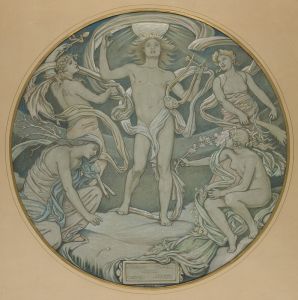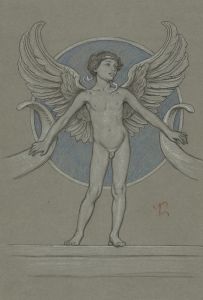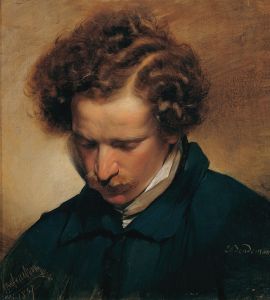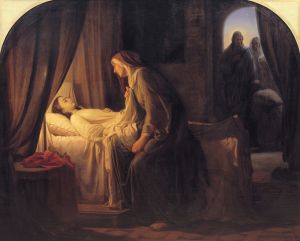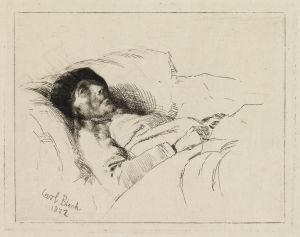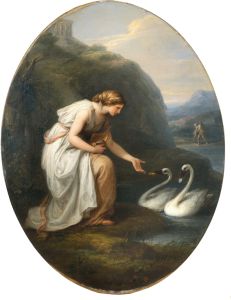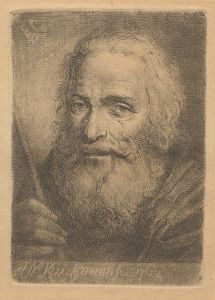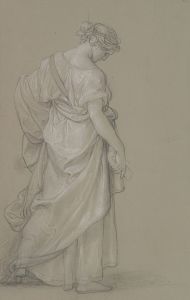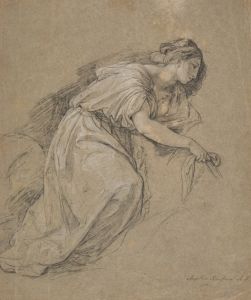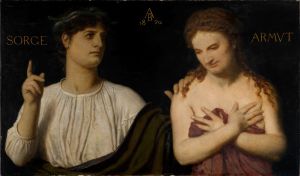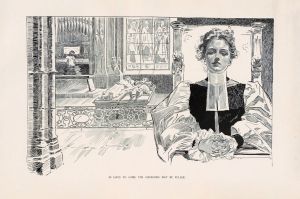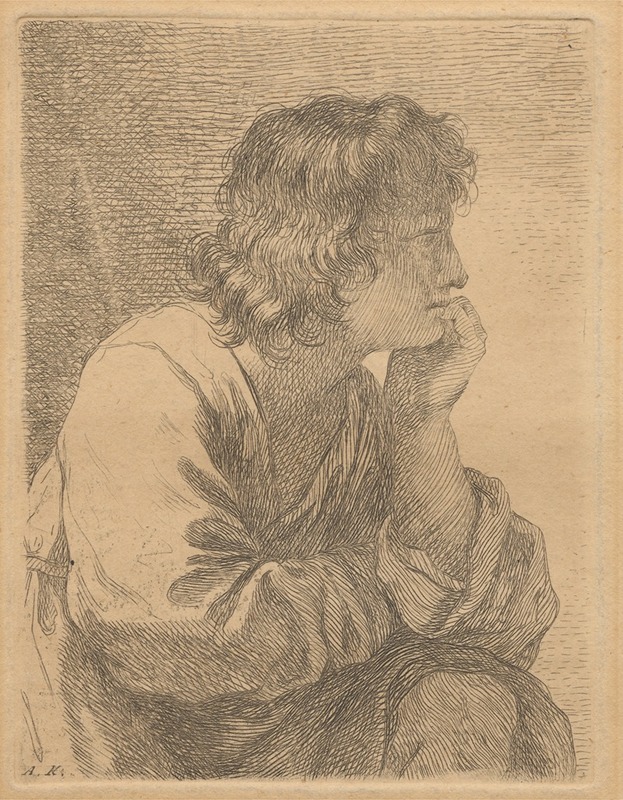
Hope
A hand-painted replica of Angelica Kauffmann’s masterpiece Hope, meticulously crafted by professional artists to capture the true essence of the original. Each piece is created with museum-quality canvas and rare mineral pigments, carefully painted by experienced artists with delicate brushstrokes and rich, layered colors to perfectly recreate the texture of the original artwork. Unlike machine-printed reproductions, this hand-painted version brings the painting to life, infused with the artist’s emotions and skill in every stroke. Whether for personal collection or home decoration, it instantly elevates the artistic atmosphere of any space.
Angelica Kauffmann, an eminent Swiss Neoclassical painter, created the artwork "Hope" during her prolific career in the 18th century. Kauffmann was renowned for her historical paintings, portraits, and allegorical works, and she was one of the founding members of the Royal Academy in London. Her work often reflected the ideals of Neoclassicism, characterized by clarity, order, and symmetry, drawing inspiration from classical antiquity.
"Hope" is an allegorical painting, a genre that Kauffmann frequently explored. Allegorical paintings use figures and symbols to convey deeper moral or philosophical meanings. In this work, Kauffmann personifies the concept of hope, a common theme in art that represents optimism and the expectation of positive outcomes. The painting likely features a female figure, as was typical in allegorical representations of virtues and concepts during this period.
Kauffmann's style is marked by its graceful figures and harmonious compositions. Her use of color and light often imbues her subjects with a sense of serenity and dignity. In "Hope," these elements would be employed to evoke the uplifting and aspirational nature of the theme. The figure of Hope might be depicted with traditional iconography, such as an anchor, which is a symbol of hope and steadfastness, though specific details of the painting's composition are not widely documented.
Angelica Kauffmann's contribution to the art world extends beyond her paintings. As a woman artist in the 18th century, she navigated a predominantly male-dominated field with remarkable success. Her membership in the Royal Academy was a testament to her skill and the high regard in which she was held by her contemporaries. Kauffmann's works were celebrated for their elegance and intellectual depth, qualities that "Hope" would embody.
The painting "Hope" reflects Kauffmann's ability to blend classical themes with her unique artistic vision. Her works often carried a sense of narrative, inviting viewers to engage with the stories and emotions depicted. While specific details about "Hope" are limited, it remains an example of Kauffmann's broader oeuvre, which continues to be studied and admired for its contribution to the Neoclassical movement.
Kauffmann's legacy is preserved through her extensive body of work, which includes not only paintings but also her influence on the art community of her time. Her ability to capture the essence of human emotions and ideals in her art has left a lasting impact, making her one of the most significant female artists of the 18th century. "Hope," like many of her works, exemplifies her mastery of allegory and her dedication to the artistic principles of her era.





